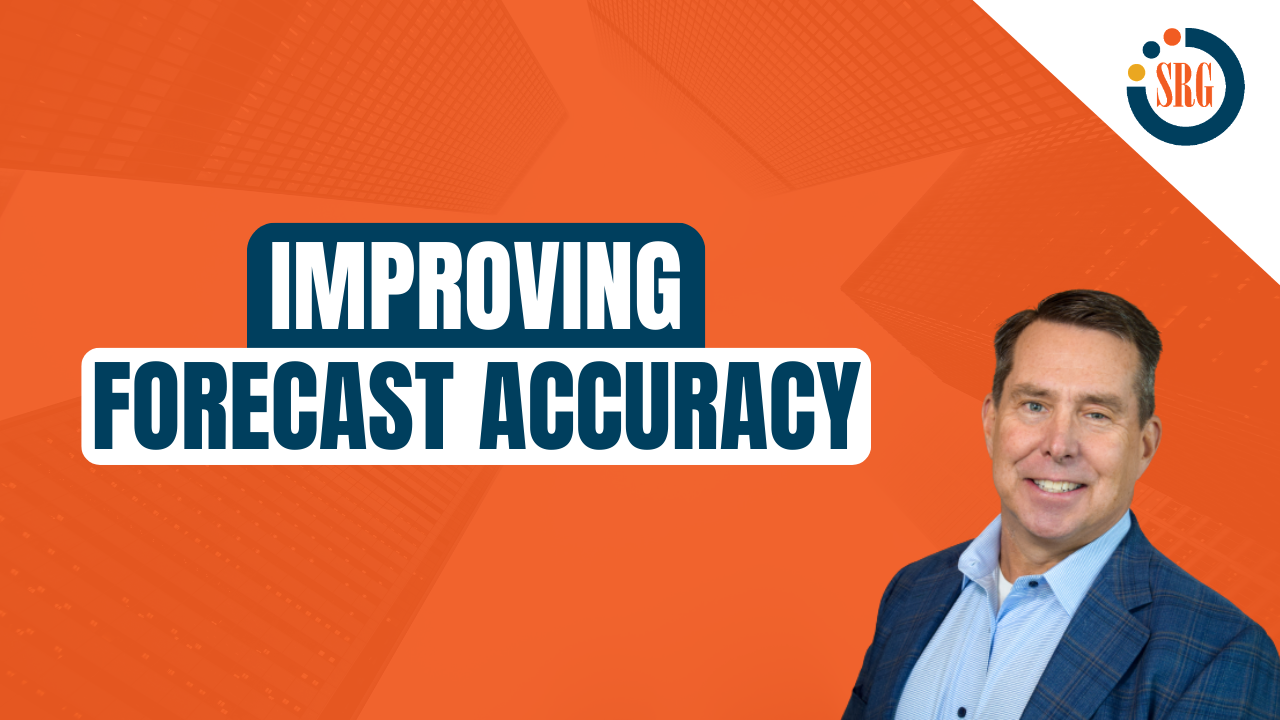Forecasting can be a challenging task. As a Sales Manager, you're asked to look into the future, predict the probable behavior of numerous sales team members and countless customers, and commit “a number” to your management team.
These numbers are then rolled up into an overall forecast and countless decisions are based on that number (from production capacity, to hiring decisions, to investment decisions, etc.).
Other than gut feel and past experience, many sales managers don’t have a defined process for how they arrive at these numbers, or an explanation as to why they think their forecast will be more accurate this time than it was last month or quarter.
Beyond reviewing each opportunity and asking the sale professional “when will it close and for how much?” - these three key steps will help you improve your sales forecast accuracy:
1. Define exit criteria by customer action
A critical first step in improving forecast accuracy is to ensure objective stages and exit criteria are defined for each stage in the sales process. Before an opportunity can advance from one stage to the next stage it must meet certain objective criteria.
It is important to capture the criteria in terms of customer actions – it’s not enough for the rep to have completed a task, but the criteria should be based on what action the customer needs to take before the opportunity can be promoted to the next stage.
Examples of customer focused criteria include:
|
Salesperson Action
|
Customer Action
|
- Salesperson sends information to customer.
|
- Customer agrees to meeting to review materials.
|
- Salesperson has identified a business need of the customer.
|
- Customer has acknowledged the need.
|
- Salesperson qualifies timing of the opportunity.
|
- Customer states how they will make a decision and by what date.
|
- Salesperson creates interest in the proposed solution.
|
- Customer agrees to follow-on presentation on specific date.
|
- Salesperson submits proposal
|
- Customer agrees to follow-on meeting to review proposal.
|
By including objective criteria for each stage, the sales manager can work with the sales person to ensure that the opportunity has actually met the criteria for each stage before advancing it in the pipeline. This allows for more consistency in how various sales people categorize their opportunities and ensures for a cleaner pipeline. We have worked with many sales teams where the criteria were fuzzy, or worse non-existent. In those cases, salespeople and their managers moved opportunities through the pipeline based on subjective judgments.
Without objective criteria in place to check the salesperson's natural enthusiasm, these teams had bloated sales pipelines with a significant number of opportunities languishing at the bottom of the funnel.
2. Assign probabilities and next action date for each opportunity
Each stage in the pipeline should include a probability factor based on an analysis of prior wins and losses. Often, the CRM system pre-assigns these probabilities based on the sales stage, and we frequently find that these probabilities are set too high, which creates unrealistic forecasts.
Careful consideration should be paid as to whether these default values are accurate and whether each opportunity “deserves” to be classified at that stage based on our objective criteria.
During our pipeline review meetings we should ask the sales person to predict not only when the deal will close, but when the customer will take the next set of actions required to advance the opportunity.
This “next action date” can be critical to determining when a deal is stuck. When the rep is failing to get commitments from the customer based on criteria we’ve set, then we either need to change the close date or decrease the probability of closing.
Once we are comfortable that our pipeline is clean (accurate actions are being accomplished at each stage) then we can multiply the probability of closing by the proposed dollar value of each opportunity to get a “factored pipeline” we can use for forecasting.
3. Require Commitment to the Forecast
Each sales professional on the team should be required to prepare and commit to a monthly forecast. This may be as simple as looking at the factored pipeline for each individual each month and getting a commitment to this number.
What becomes very telling is when we review this number with the sales rep, they frequently get very uncomfortable “committing” to this number in advance.
Why?
Salespeople may resist committing to their forecast because they intuitively know that many of the deals in the pipeline won’t close on the predicted date, or they have deals they suspect are dead but they don't want to remove them from their pipeline until they replace them with something else.
One suggestion is to create a contest that rewards the individuals who come closest to the number they forecast at the beginning of the month. The sales rep who delivers the best results compared to their forecast (not by size but by closest to the forecasted value) wins a gift card, team recognition or some other prize.
By getting a commitment to the number and then reviewing it at the end of the month we can increase the visibility and attention that is being paid by each rep to the importance of a clean pipeline and accurate forecasts.

